Eight Sweets Postmortem
Introduction
It is recommended that you play through Eight Sweets before reading this postmortem, as this document will include in-game spoilers. I will also be talking about the challenges involved in making this visual novel, and how I feel about the VN after completing it, which may affect your enjoyment of the game, and how you perceive the VN.
The game is free on Itchio.
With that out of the way, here is the postmortem of Eight Sweets.
How the Game Was Made
Initial idea:
Eight Sweets was created for the Yuri Game Jam. I came up with the idea as a way of experimenting with making a VN with scenes that are randomly-picked.
Planning the routes:
The game is presented as having scenes that are randomly chosen, but that's not quite right. Eight Sweets has been programmed so that players will not see certain scenes again if they've already experienced them in previous playthroughs. There are four main branches with choices that determine the ending. Each of the four routes has two endings (leading to eight endings). Once a player has seen both endings of a route, the player will stop getting that route from the game's scene randomiser.
I first planned out the routes on paper and then on Twine, adding additional scenes I wanted to include.

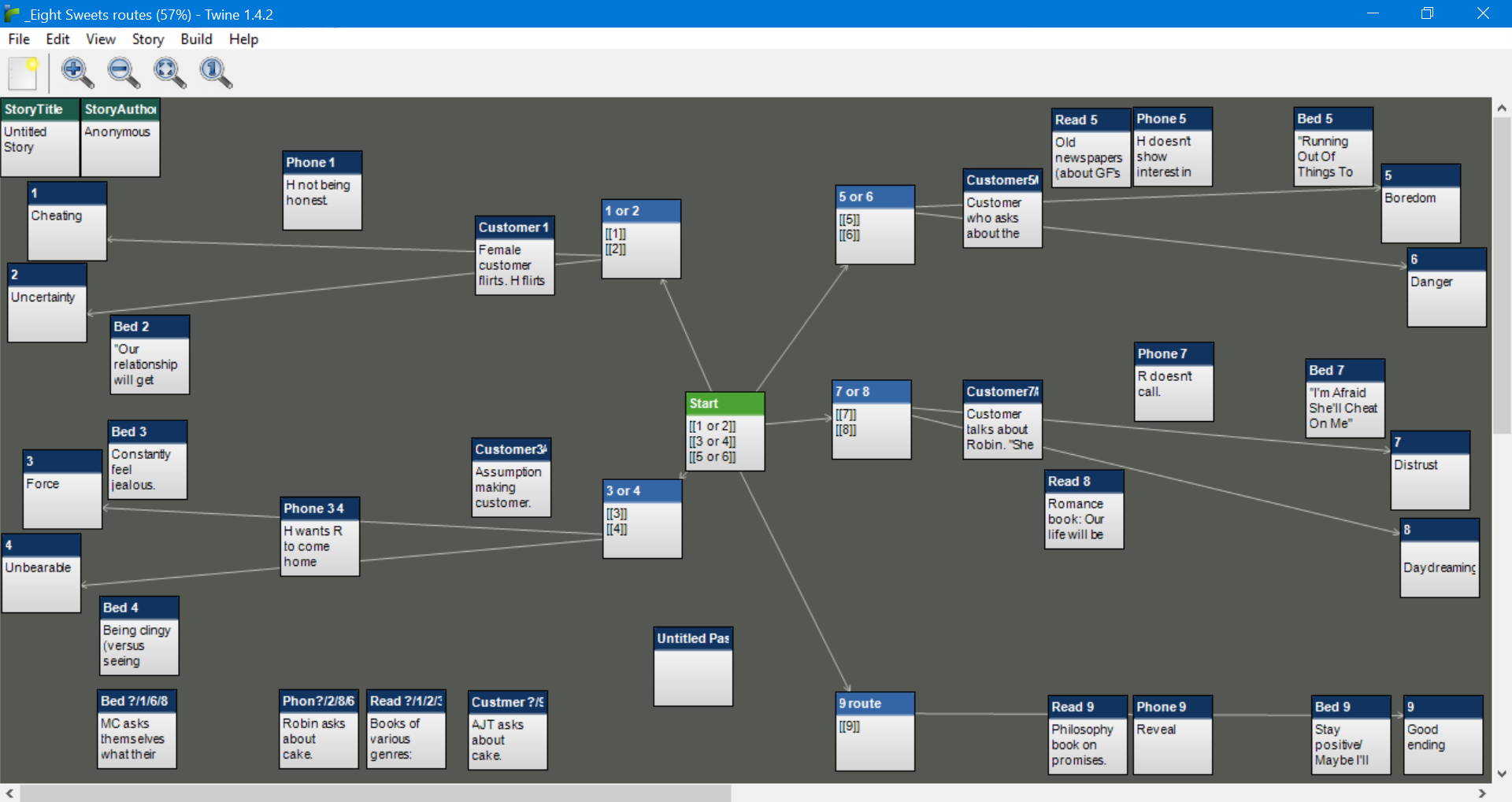
The player unlocks the ninth ending once they've found the first eight.
Programming the routes:
A big challenge was finding a way to program the randomly-generated routes the way I imagined them. I wanted the game's randomiser to narrow down possible routes and scenes the player sees so that they see as much different content (and as little repeated content) as possible.

At first, I tried using a bunch of Else/If switches and flags, but it made the code very messy.

Empish on Discord saw my rat's nest of a code (pictured above) and ended up helping me immensely on re-writing it to become more simplified and manageable. The game would not be in the working condition it is without Empish. Thank you, Empish.
Collaborating with LucentCatty:
Eight Sweets was a co-written by me and LucentCatty.
I'd like to once again thank LucentCatty for her patience and work in collaborating with me for Eight Sweets. It was a highlight of the experience of making the VN and I don't think it ever would have been completed without her. She helped to motivate me into finishing it.
The set-up was like this: I made a Trello page for the VN, dividing the game's scenes into cards, assigning some scenes to myself, and some to LucentCatty. We wrote the scenes and I programmed them as a script in Ren'Py, the game's engine.
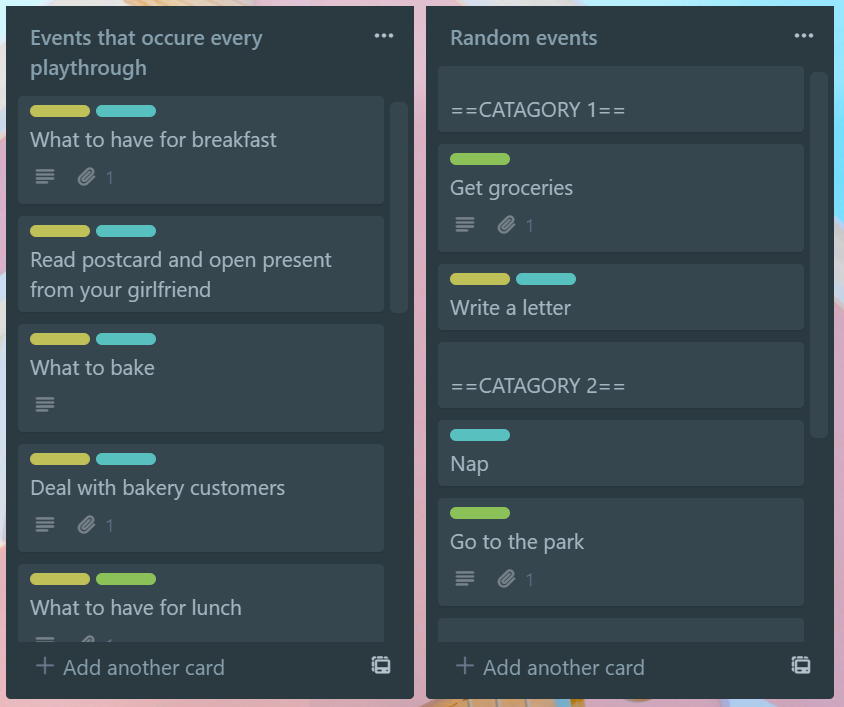

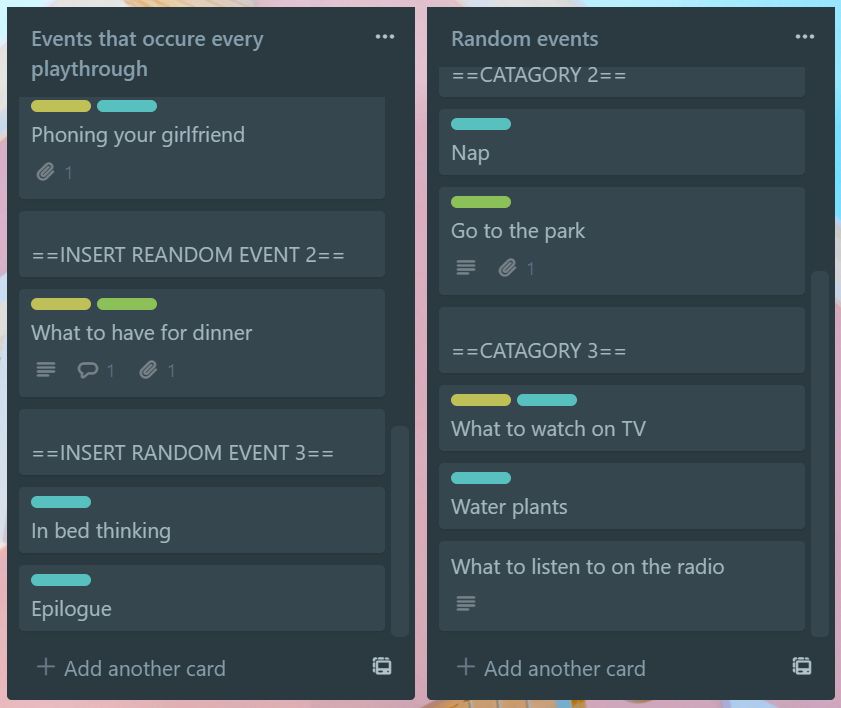
(Pictured above: Screenshots of the Trello cards.)
Swipe Folder:
I created a "swipe folder" (a thing that I've done for previous VNs, but didn't know the proper term for it prior to making this VN), filling it with images I found online for inspiration in designing things for the game. I searched for a lot of 1960s aesthetics.
Writing the game:
I wrote Eight Sweets in Microsoft Word at first, then switched over to Scrivener, which greatly improved the process. Then I took the text and translated it into a script in Editra.
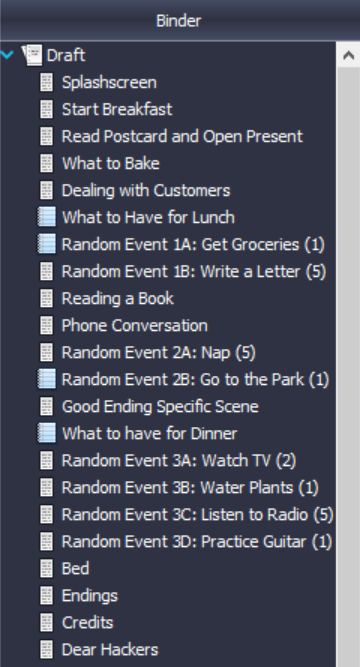
(Pictured above: The game's pages in Scrivener, divided by scene.)
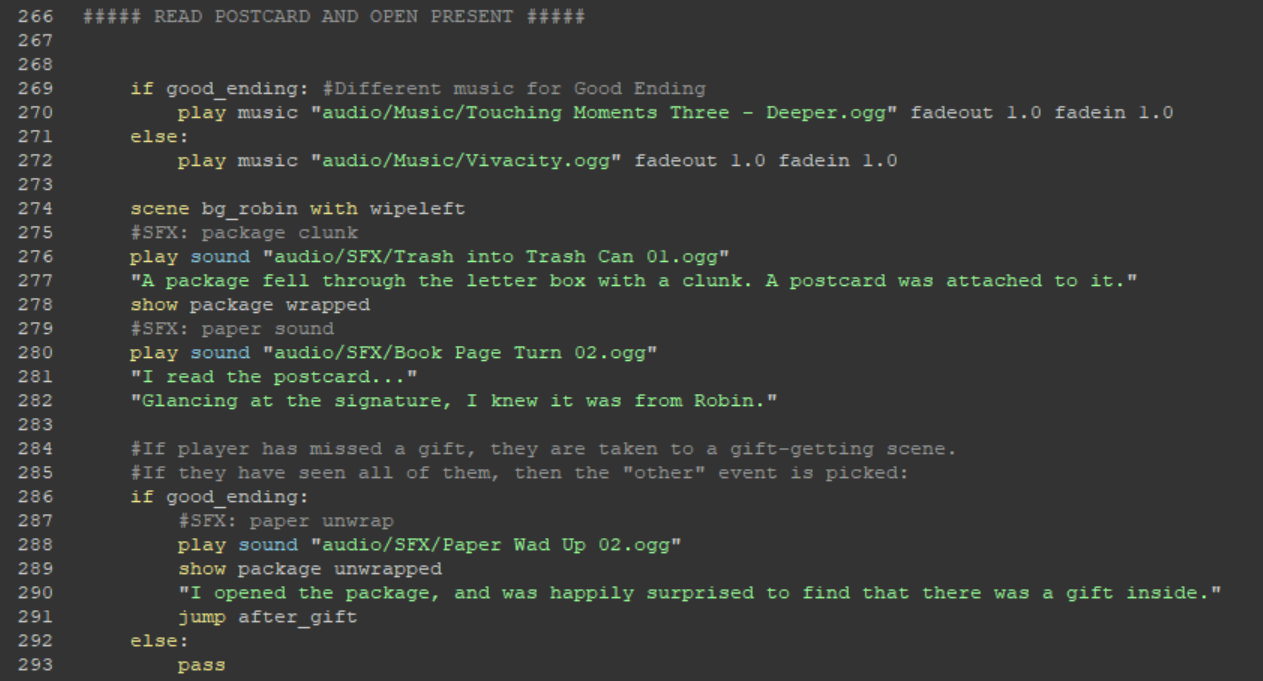
(Pictured above: Screenshot of the script in Editra.)
The art was made in Photoshop:
I used some of Kyle T Webster's halftone brushes for some of the game's patterned backgrounds. The game has a simple, minimalist, vector-heavy art style, but some of the details are "cheated vector art"--meaning that I drew some of the lines and shapes by hand, rather than using vector shapes. This was mainly because I like drawing freehand.
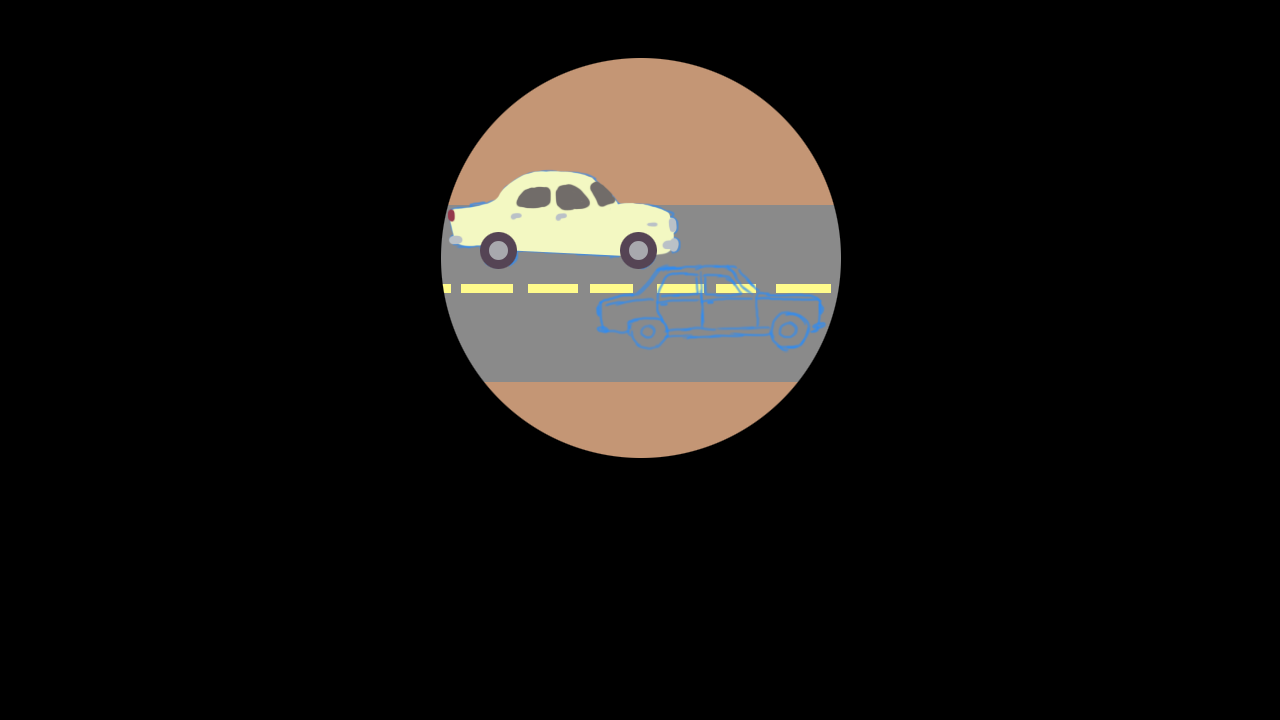
(Pictured above: An incomplete, deleted car CG for the car chase scene.)
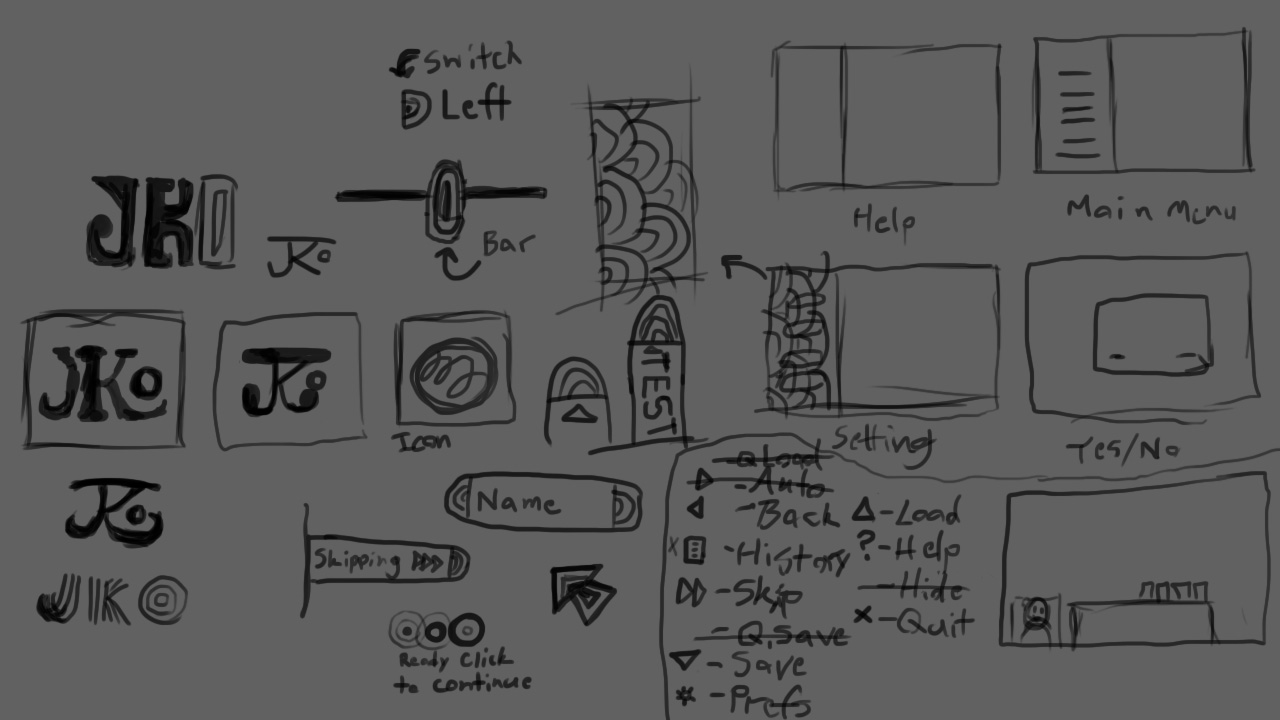

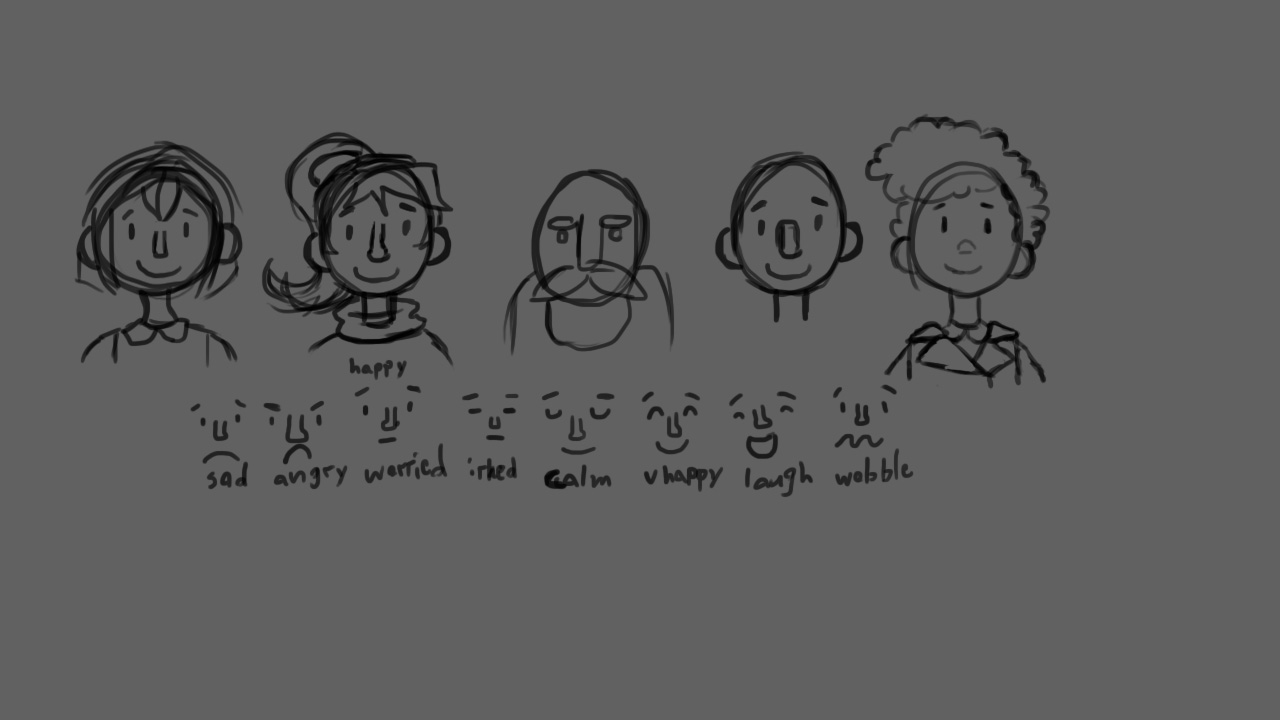

The background colours seen in some of the routes and during each ending scene represent the different endings. The final, good ending is associated with yellow, for example.
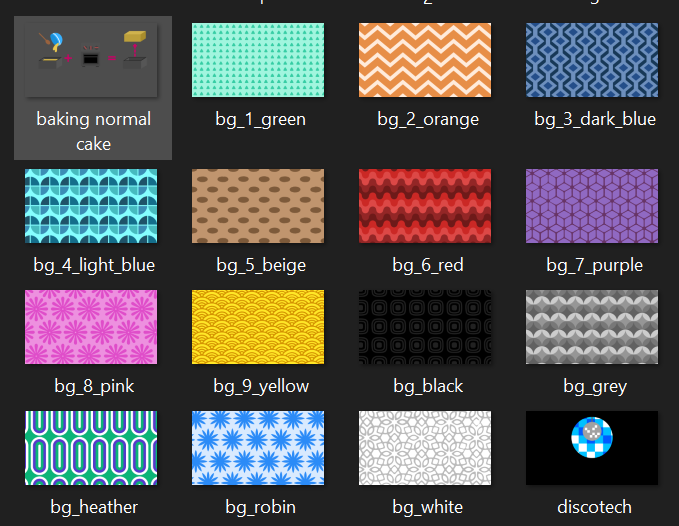
(Pictured above: Screenshot of the different coloured backgrounds in the game's folder.)
The chocolates screen also shows the colours and each chocolate's colour corresponds with the ending it's linked with.

Here is a sped-up recording of a livestream where I worked on some of the art assets for the game.
Music:
I tried to find music that fit in with the game's 1960's style. The game then switches to delicate, isolated piano music during the game's different endings.
Beta testing:
I asked some people on Discord if they wanted to playtest the game, and found a group of people who offered to help. They played through the game several times, sending me quotes of where the typos or errors were, so that I could quickly find them in the game's script (using the Ctrl+F search bar) and fix them.
If it wasn't for them, the game would have been released with a ton of typos. Thank you for your help.
References and Inspiration
Although art is a culmination of all previous art (and therefore, I can't list everything I've seen that's affected my creativity, as that would require me to list every thing I've ever seen), I can say that I consciously took inspiration from a lot of different things while making Eight Sweets:
Batman 66:
1966's Batman and Robin series was one of the biggest influences of the visual novel. I love the tone of Batman 66 and how upbeat it is, and I wanted to capture that tone: The bright colours, the dramatic characters, and the 60s setting.
Robin is named after the Boy Wonder (she's also referred to as the Girl Wonder in homage to him).
The Avengers, The Man from U.N.C.L.E, No One Lives Forever:
1960s-set spy stories were also a big influence on the game. The Avengers (the British series--I'm actually not that familiar with the unrelated, similarly-named American superhero franchise), The Man from U.N.C.L.E. (specifically, the 2015 film), and the brilliant video game, No One Lives Forever.
The Adventures of Tintin:
Tintin was not only an influence to Eight Sweets, it was also something I paid homage to throughout the game, as the history behind Tintin's creation played a role in Eight Sweet's plot. Palle Huld was a real life explorer who reportedly inspired Hergé to create Tintin. Huld won a contest which allowed him to travel the world. In Eight Sweets, the same contest is held in the 1960s, and Robin won the prize to travel the world--like Huld--causing history to repeat itself.
There are homages all throughout the VN that Tintin fans can spot. From clothing to rescued scientists.


(Above: Robin's Tintin in Tibet outfit, and the ice cave.)
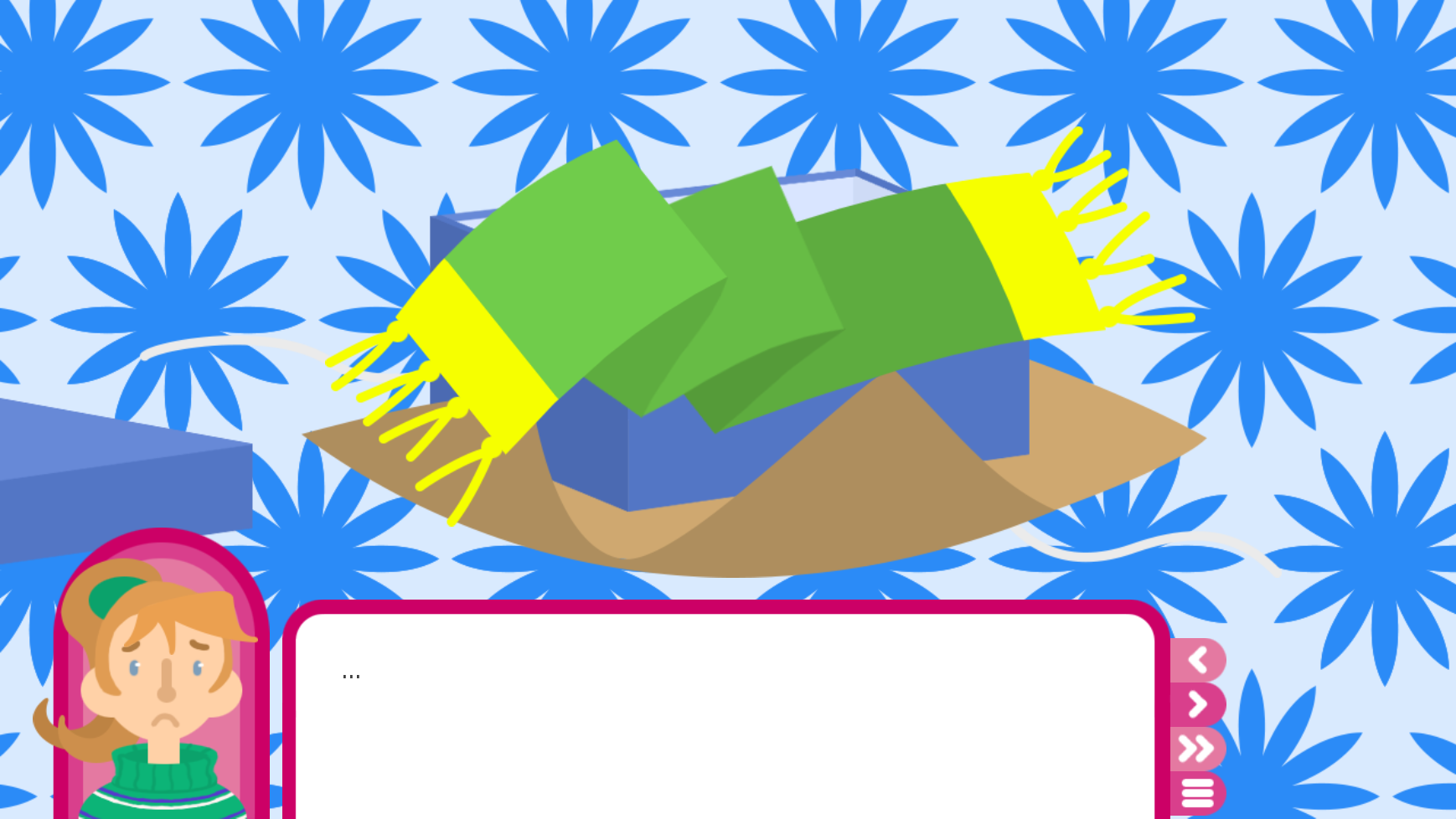
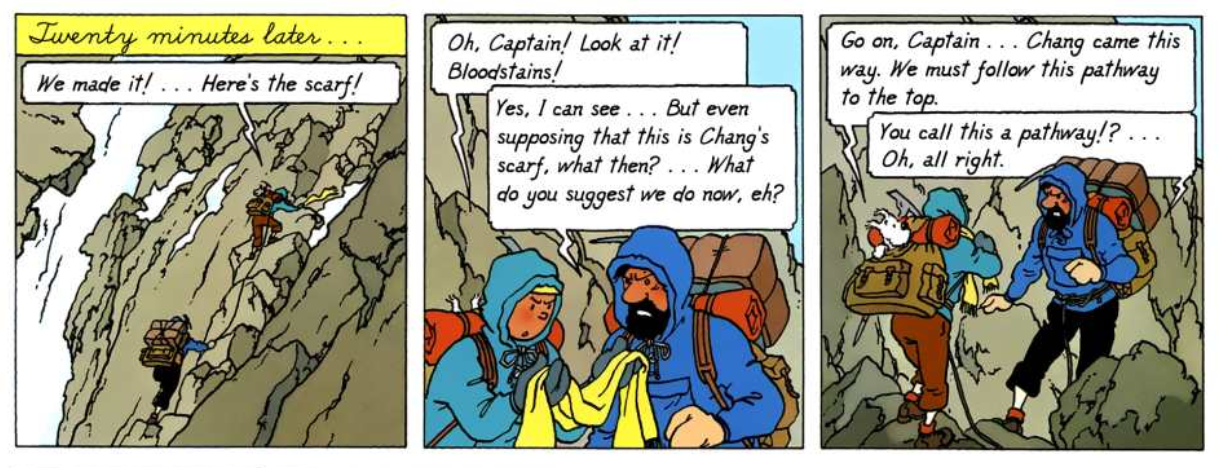
(Above: The silk scarf.)
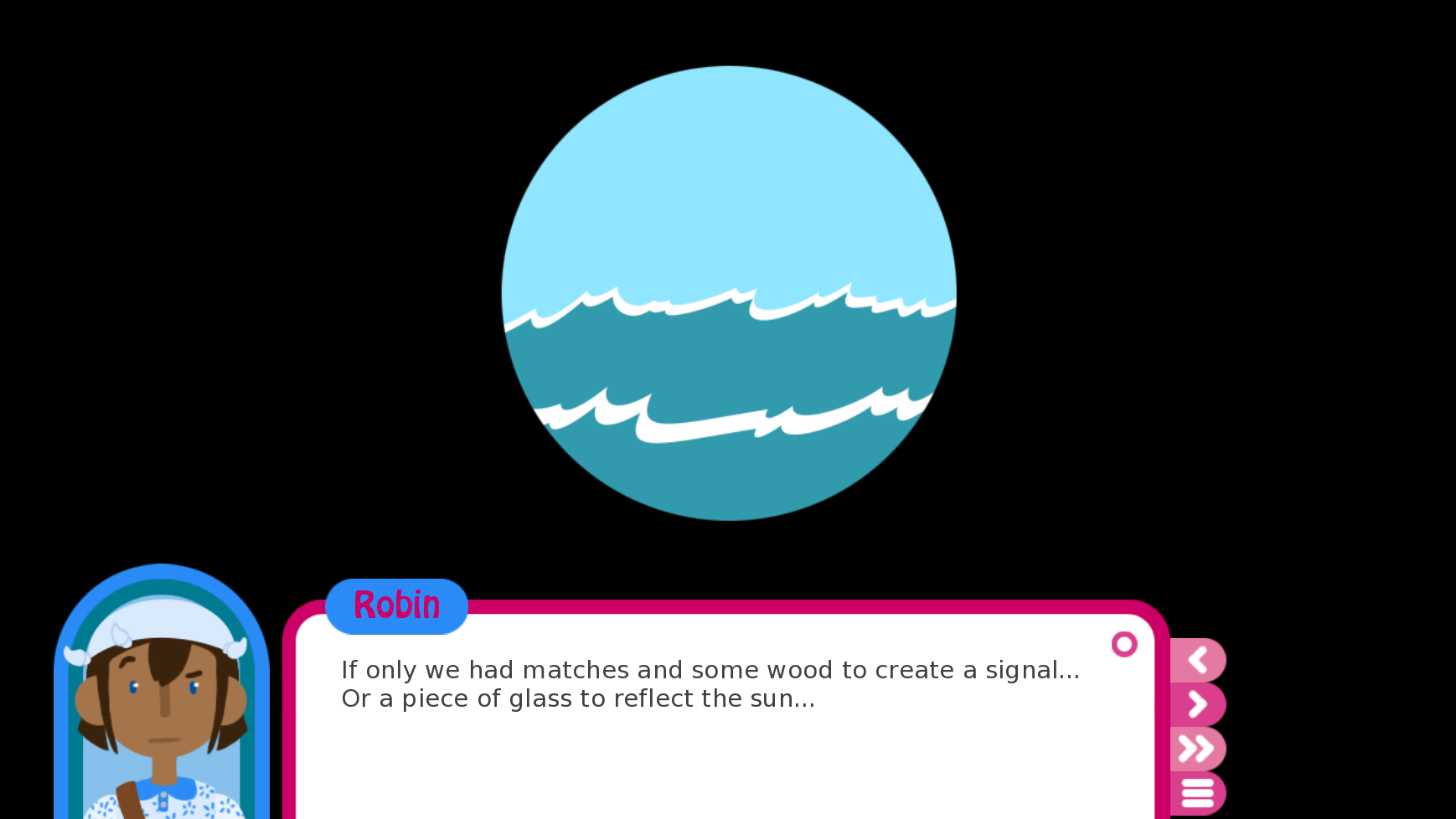

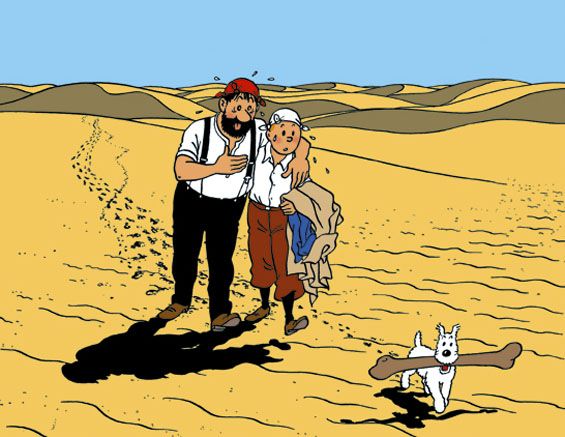
(Above: Robin's "handkerchief hat"--similar to what Tintin made for himself in The Crab with the Golden Claws--and the waves resembling the cover of The Red Sea Sharks.)
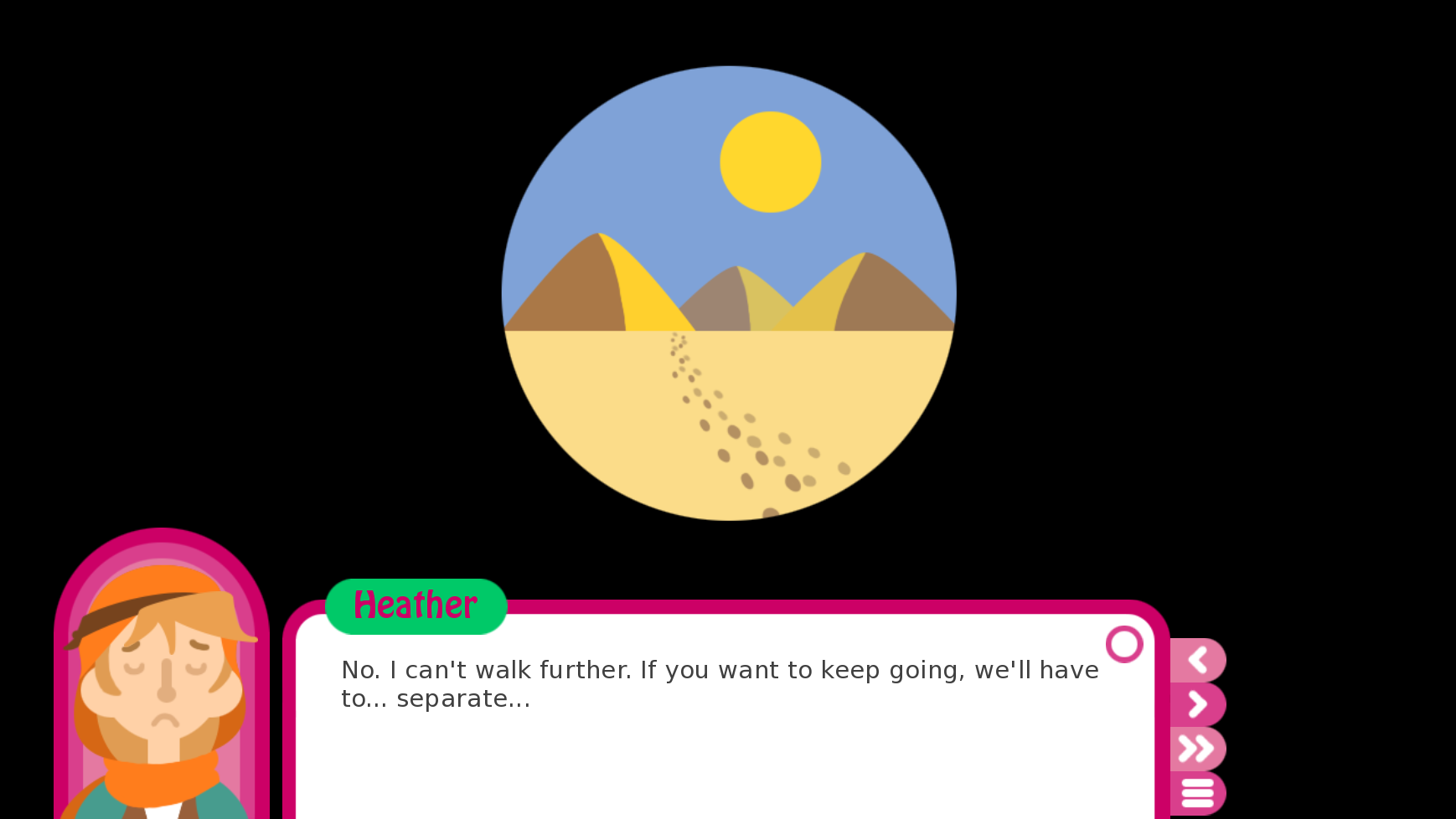
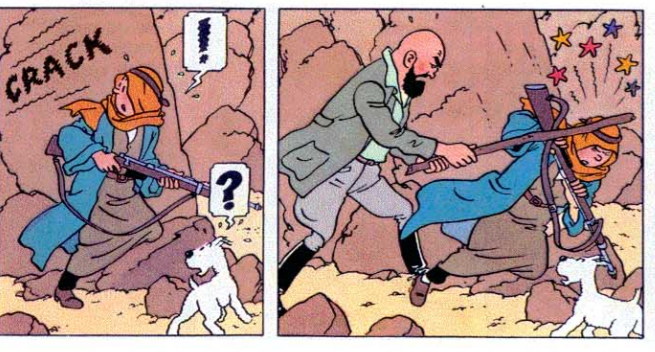
(Above: Heather's outfit is inspired by Tintin's disguise in Land of Black Gold.)
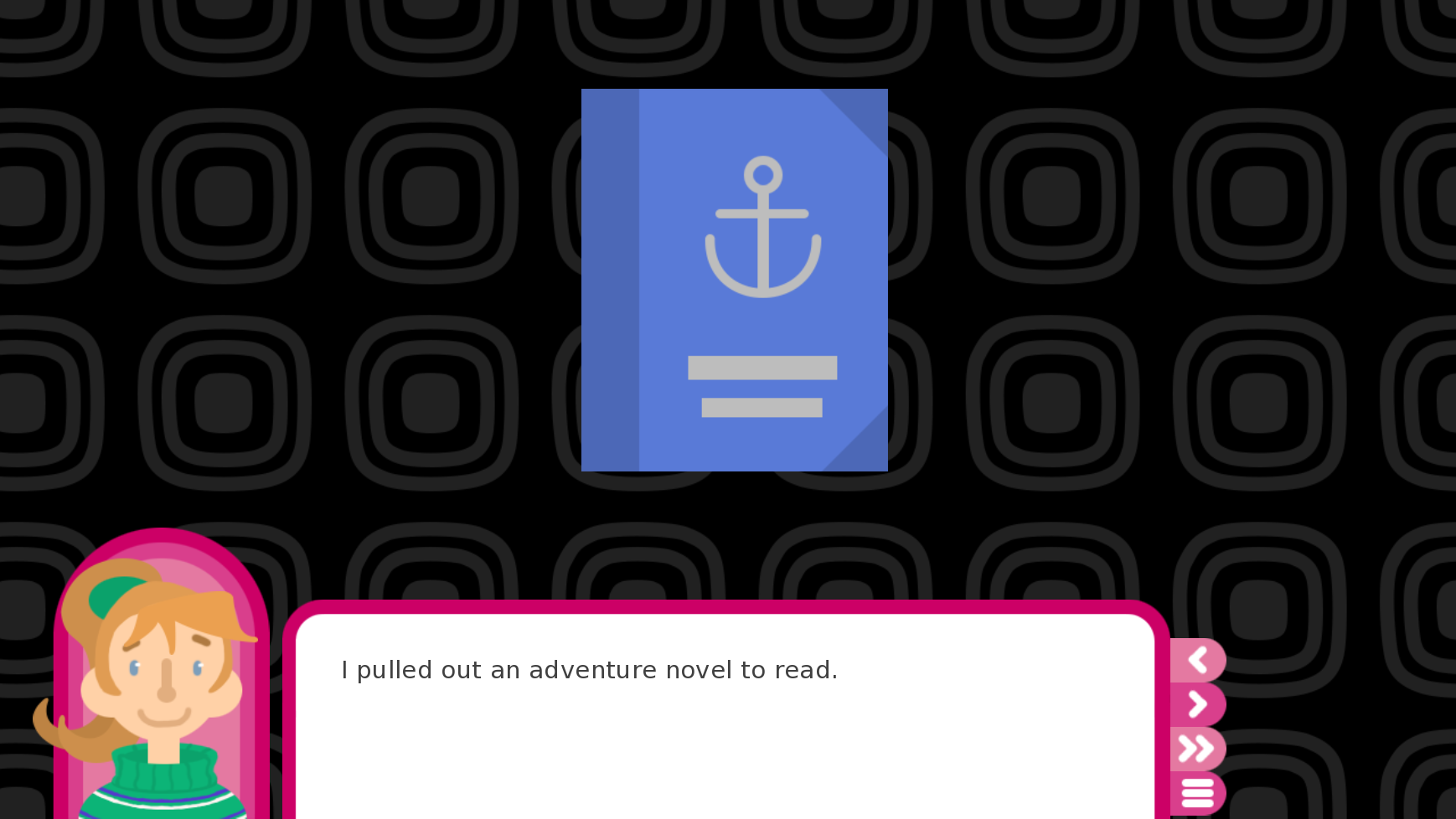
(Above: Captain Haddock's sweater on the cover of the adventure novel Heather reads.)
Robin was definitely inspired by the character Tintin--in terms of her determined, optimistic, polite personality and her ability to casually get into trouble and save the day. Heather, as her foil, is inspired by Tintin's more grumpy foil, Captain Haddock.
The main villain in Eight Sweets uses a specific gun: A Stechkin automatic pistol, similar to some of the firearms used by villains in Tintin. At some point in the game's production, I had the idea of making the villain's pistol a fake replica (that he was using because he couldn't get a hold of a real one). Was thinking of adding it to get around the "How did he get that gun in Canada?" question. I ended up not including this twist because it removed a lot of the threat of the antagonist once the player realised.

Brainstorming Visuals:
When brainstorming the visuals for Eight Sweets, I looked in several different places. I looked at director Wes Anderson's symmetrical and designer-friendly layout that he uses in his films. I studied vector art. I looked at cooking videos (ones that have a very specific aesthetic: The camera is placed above the food in a bird's eye view. Then the food is prepared in steps that we see through a series of jump cuts) that are used for marketing on Twitter. These videos were a reference point for all the meal scenes in Eight Sweets.
(Above: A video compilation of different God's eye view shots in Wes Anderson films.)
Cooking and baking videos on Twitter:

I looked at 1960s ads (specifically, ones for gum, cake, and chocolate). I also used font typefaces that reminded me of the Beatles' animated film, Yellow Submarine. It captured an aesthetic of the 1960s that I wanted.
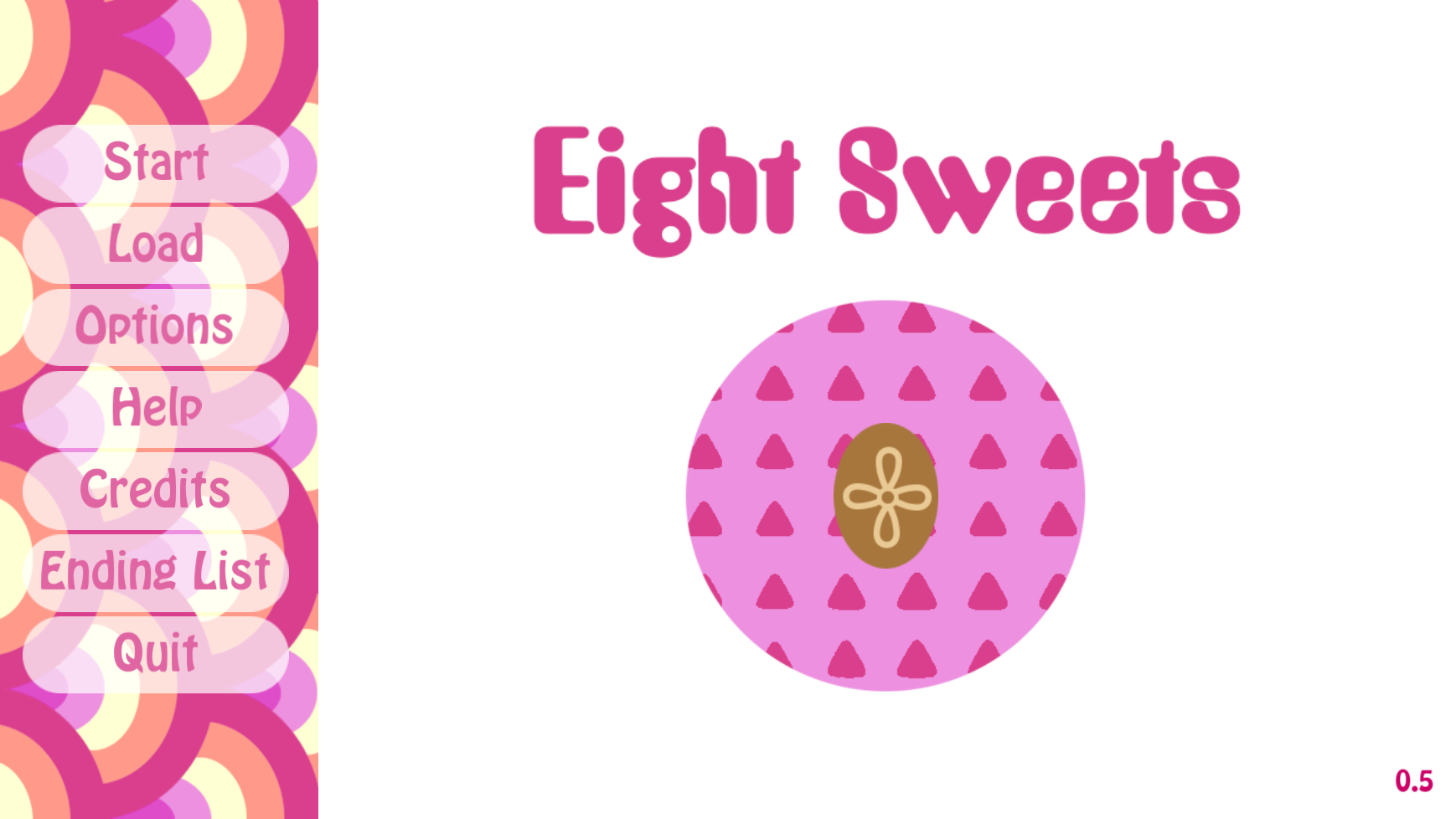
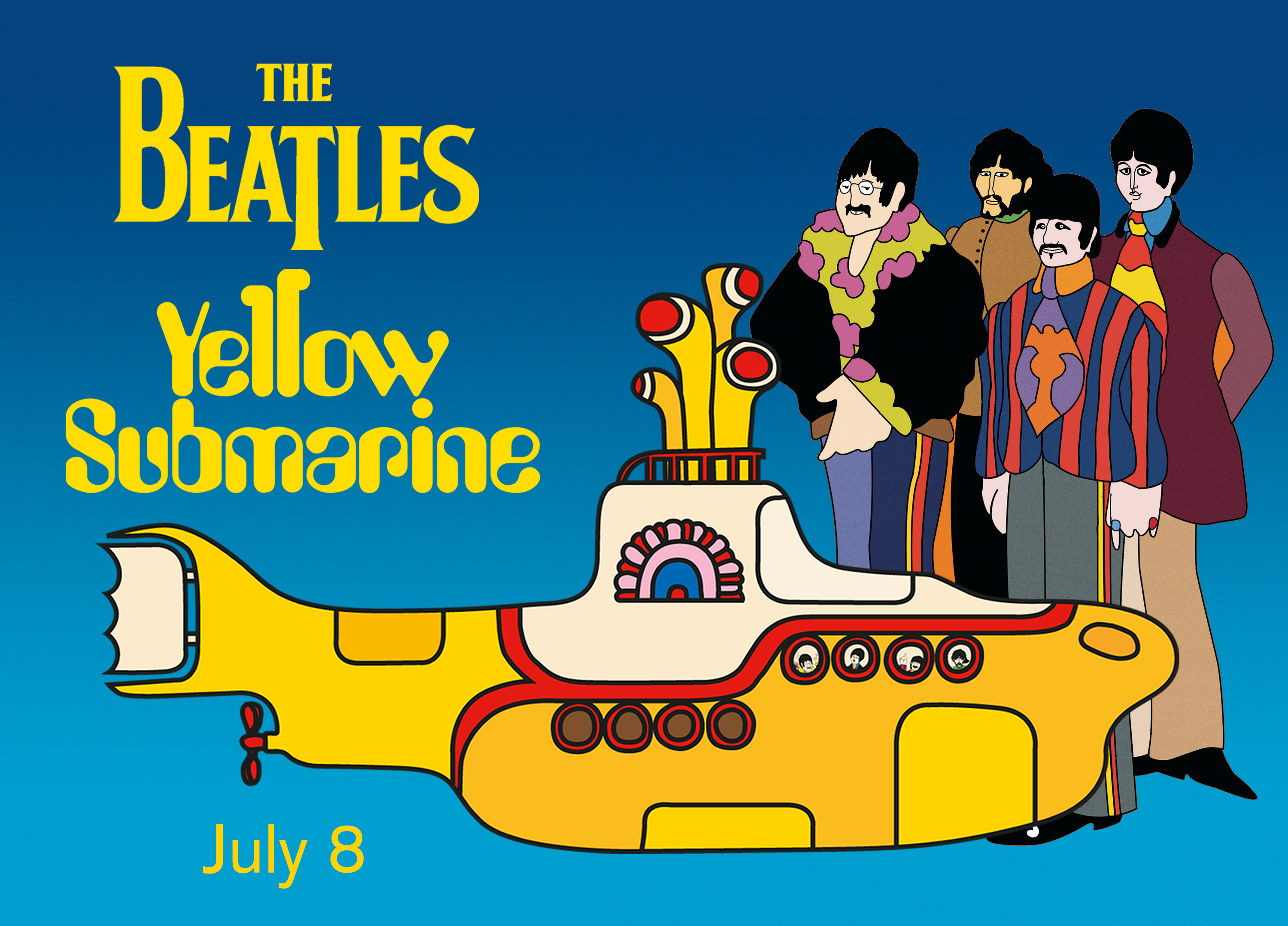
Hiding in a Cake:
Funnily enough, the "hiding in a cake" trope (that I used during the VN's final ending) wasn't me referencing Some Like It Hot. I saw the film after coming up with it. But I would have gotten the idea from somewhere that was directly referencing the film, so like I've said before, every work of art is a culmination of all past art, whether we are aware of it or not.
Indiscreet:
1958's Indiscreet is a film about an ambassador and an actress who fall in love and have to keep their relationship a secret. It's one of my favourite films of all time. In the film, they have to choose their words carefully when they're talking to each other on the phone, because the operator might be listening in (an old security threat that we don't even think about anymore unless a period drama notes it). I included this worry in the telephone scenes in Eight Sweets.
The Garden of Forking Paths:
The Edge of the Path, referenced in Eight Sweets at the beginning of each playthrough, is not a real book, but the quote is from a Let's Play of The Beginner's Guide video game. The idea was for the quote to relate to the Many Worlds Theory of alternate timelines--which is what the player experiences in Eight Sweets: Heather and Robin's relationship either falling apart in several different ways. There's also a scene I wrote where Heather can read through a book talking about the Many Worlds theory. One of--if not the--first story to explore the Many Worlds theory (even pre-dating its proper term) is The Garden of Forking Paths short story by Jorge Luis Borges.

(Above: The Edge of the Path quote screenshot in Eight Sweets.)
The Princess Bride:
In the book, Princess Bride and Philosophy: Inconceivable! (which is a series of essays about The Princess Bride), there is an essay about the importance of promises, and how it is a large theme in the film. In Eight Sweets, it's also a strong theme (a long-distance relationship can only work if the people in the relationship keep their promise to stay loyal to each other and what their relationship is built upon). So I included a scene where Heather reads a book on the importance of promises, and how civilisation itself cannot stay stable without it.
Fallout 4:
In Eight Sweets, Heather can listen to a radio drama about a character called the Silver Blaze, which is a reference to the Silver Shroud radio drama in Fallout 4. The Silver Shroud costume is my favourite player character outfit in Fallout 4.
The Shape of Water:
In the VN, Heather can watch a film on her television about a love story between an alien and a human woman, with Heather really getting invested and seeing a lot of her and Robin's relationship in the film. This scene was inspired by Lindsay Ellis' online video essay on The Shape of Water and how we as an audience often identify with the "monster/robot/alien" in stories more than the humans trying to stop them. A lot of us relate to these monster type characters because they originally were meant to be an allegory to represent "the other" (or people who are different). This has lead to more creators writing stories about human characters developing strong relationships with "the other," either as friendships or romantic relationships.
Alice's Adventures in Wonderland:
The scene where Heather sings "Soup! Beautiful soup!" is a quote from the Mock Turtle in Alice's Adventures in Wonderland. Heather has spent a lot of time reading and is well-read in both classic literature and more obscure text.
Retsupurae and Urban Runner:
Dr. Dramish is a reference to the video game Urban Runner. I watched Retsupurae do a humorous Let's Play video series of it, and one of the characters in it was named Dr. Dramish (Retsupurae at one point said, "What a Dramish queen!" after a particularly odd plot point). I needed a doctor-y name for the blizzard scene in Eight Sweets, so I took it from there. It evoked the right tone I was looking for.
The Report of the Week Coincidence:
Twitch streamer KazeCasey told me that the "Boy" character in Eight Sweets looks like the YouTuber, The Report of the Week. He makes thorough and interesting video reviews on fast food. At the time, I didn't know who that was, so I looked him up, and Casey is right. This realisation has haunted me for the past several months, because I don't know what to do with this information. CASEY!!! XD
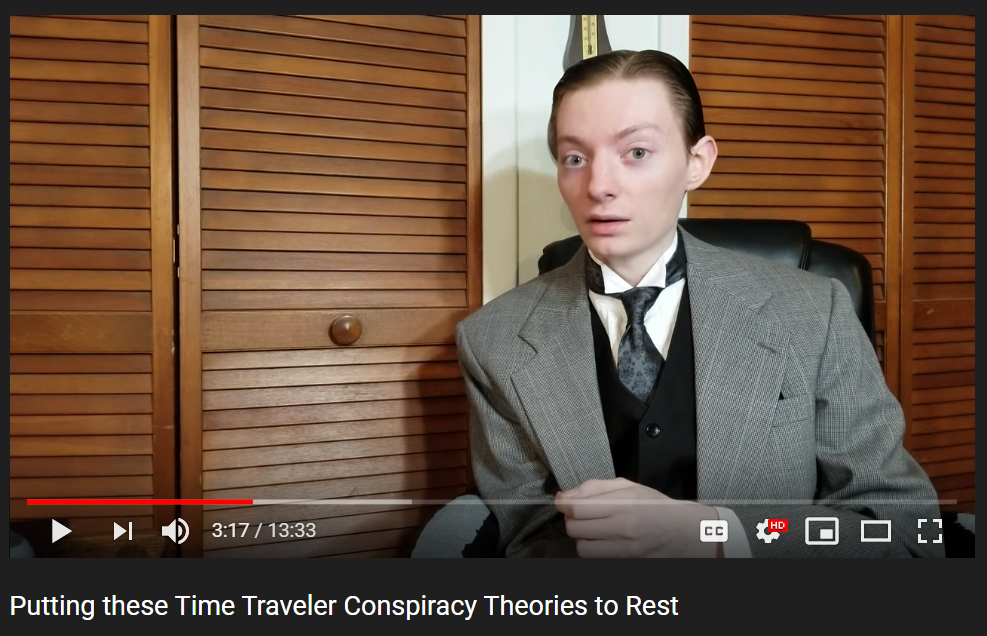
(Pictured above: The Report of the Week.)

(Pictured above: The boy character in Eight Sweets.)
First Times:
While working on Eight Sweets, it was my first time doing the following things:
Using new UI:
While The Heart of Tales what my first published game that used the Ren'Py engine's updated user interface, Eight Sweets was the first game I started working on that used the new UI.
Sprite image layering:
Like the new UI design, Ren'Py's big update added a simplified way of adding sprite image layering. This allows developers to change each character sprite's expressions and outfits in a simple to implement way.
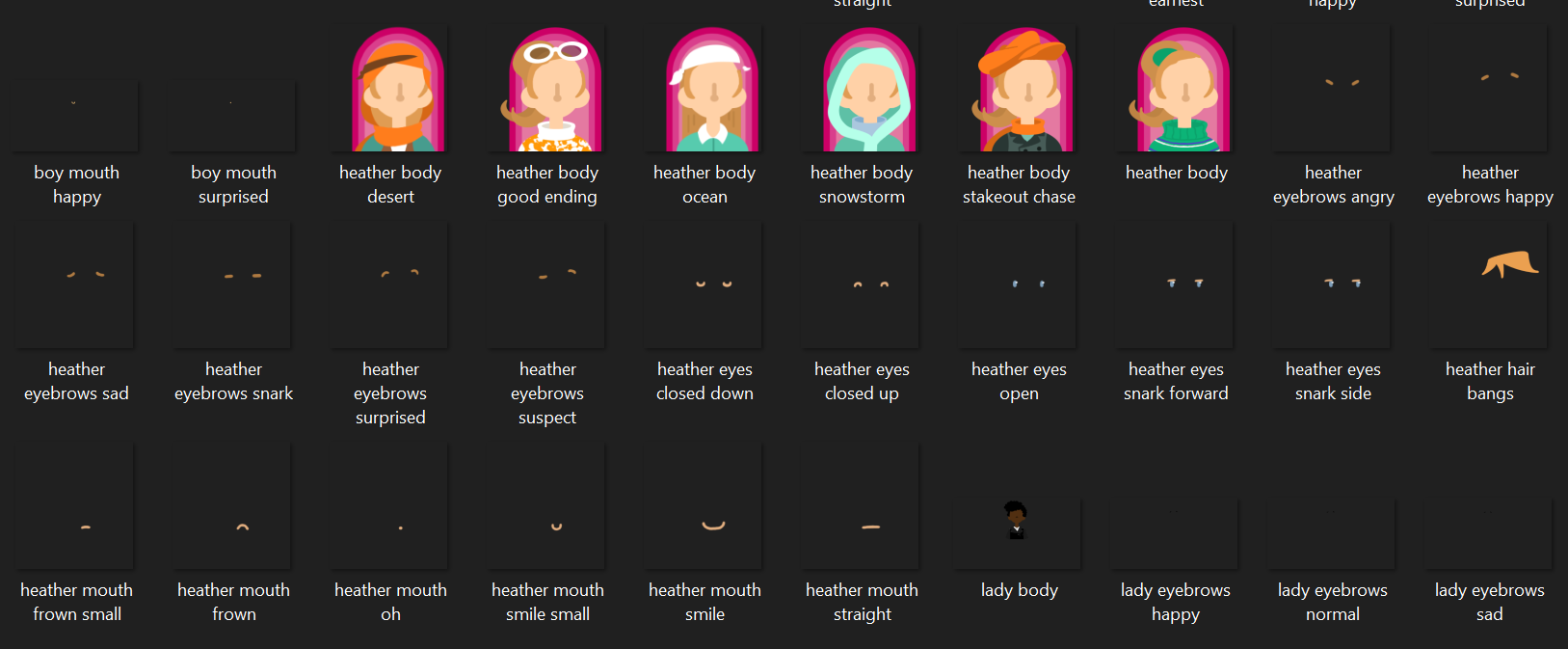
(Pictured above: Screenshot of the layered images for Heather's faces.)
Side images:
Normally, I've never used side image portraits in my VNs. Instead, I display all the character as sprites within the screen. However, since Eight Sweets is shown through Heather's point of view (meaning, the game's "camera" is her eyes), I used side images for her and Robin (since Robin is often not physically with Heather--Robin talks to her on the phone a lot of the time instead).
Dynamic and Custom transitions:
The game engine Ren'Py allows you to use animated transitions to change scenes. Examples of transitions I used in Eight Sweets are called circlewipe, circleirisin, pushleft, wipeleft and dream (for the VN's dream sequences) from the Ren'Py Tutorial VN that comes with the launcher.
Transitioned from Word to Scrivener:
After I stopped using Microsoft Word, I started looking for an alternative word processor for writing my games. One that was quick to load (and didn't have a huge amount of bloatware) and made branching story paths easy to organise. I tried LibreOffice, but it did not support smooth scrolling on a laptop trackpad (which can make scrolling through documents that are multiple pages long unbearable). It also didn't have collapsible headers, unlike Word. Collapsible headers are useful for VN writers because it allows you to hide and group different branching paths in your VN's script. So I decided LibreOffice was not quite right. I was recommended Scrivener by multiple people, so I tried the free trial of it. I ended up liking it so much, I bought it.
Marketing campaign:
Normally, when I release a game, I post about it on my social media, and sometimes also create a trailer for the game. This time, I also posted teaser images counting down the days to the game's release, showing one of the nine sweets shown in the game's ending list screen.
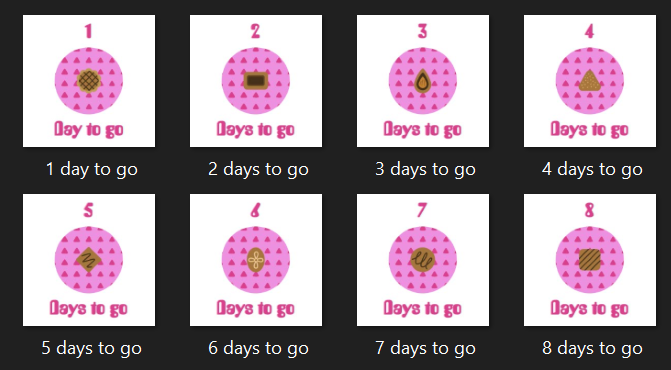
I also posted links to the VN on Reddit, trying out the website (prior to this, I didn't have a Reddit account). It got no reaction, as far as I can tell.
Reception:
Eight Sweets was released on the 13th of May, 2019. The VN has been downloaded 99 times in total as of the 5th of August, 2019. The peak number of downloads in a single day was the day after initial launch, with 8 downloads in one day.
I don't have much of a read on how people reacted to the VN. Eight Sweets has the least amount of reactions and comments from people compared to my other visual novels. This lack of reaction is unfortunate, as 1) Getting reactions, changing people, affecting people, making a connection with other people, and making people think are big motivations for why I make games. And, 2) Criticism is a way I learn what the project's strengths and weaknesses are. I also use criticism to gauge how I should move forward with my next project.
The game was livestreamed on Twitch by KazeCasey, and I was lucky enough to see it. I had a fun time seeing it. I made several Twitch Clips of the playthrough: Clip 1 | Clip 2 | Clip 3 | Clip 4 | Clip 5
It received 3 reviews in Itchio (two 5/5 stars, one 2/5 stars).
Generally, people said that:
- They liked the art.
- Players were unable to get a good feel for how their choices affected the game.
- Players often did not discover every ending.
The comments I was able to find generally praised the art most. The biggest criticism was the amount of bad (or bittersweet) endings.
The game's Easter egg:
Only one person (one of the beta testers) seems to have found the "dear_hackers" file in the game's folder, which contains an Easter Egg. I don't know if the player was able to decode the sections of it written in L33T.
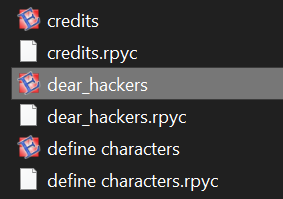
What Worked:
Outfits:
Adding different outfits for the main characters Heather and Robin was surprisingly easier than I predicted with Ren'Py's image layering capabilities in its big GUI update. I am happy with the results and I plan on using it further in future projects.
Animated main menu:
I'm glad I was able to implement my main menu design (with a lot of help from people on Discord and the Lemmasoft forum!) without any compromising. And since I was able to get it to work properly, it means I can do it again in future VNs. Animated main menus, yay!
History repeating is a theme:
In Eight Sweets, Robin follows in the footsteps of Tintin and Palle Huld. The game itself also requires the player to replay the game several times to get the final, good ending. I like how closely the theme of history repeating itself ties so closely to the game mechanics of the VN, and this concept will also continue in my future work, though perhaps in a different way.
What Could Have Been Better:
Marketing, promotion, and reception:
There was not enough done to promote the game. For my next game, I'll need to start getting people interested in it as early as possible. Marketing cannot be an afterthought. It can't even be something you start during the last stretch of production. I've noticed other developers use Twitch to livestream their games' development, so I will try that out. I will also study other online marketing campaigns that I've enjoyed (I loved Good Omens' Twitter marketing. For the most part, it kept the spirit of the series and was strikingly in-character with the show it was promoting), and how to properly create one myself.
In his video essay, This is Phil Fish, Innuendo Studios says the following about the success of the game Fez:
"[Fez] blew up on Twitter because it was perfectly suited to Twitter. Everything you needed to know about it could be understood in four seconds of video, or even an animated gif. It was a game that compressed well, and the more compressed information is, the further can travel on the web. This took no particular genius on Phil's part, he simply lucked into an idea that elegantly fit the mold of how games became popular in 2008."
Eight Sweets does not compress well. It is not a high concept. It is a quiet story about a long-distance relationship. The twist works best when it creeps up on you, rather than be hinted at at all in its marketing and promotion. I should consider more how well my future projects compress.
Production speed:
Eight Sweets was the longest production of a game I've ever done. From August 2016 to May 2019. I wasn't working on it for that entire time. I kept stopping and switching to other projects. I made and released The Heart of Tales while I was in the middle of Eight Sweets. Events in 2016 changed part of my worldview, and that changed my priorities on the kinds of messages and morals I wanted my games to have. I suddenly had a fierce desire to write a story about pacifism versus the Paradox of Tolerance, so I developed The Heart of Tales in reaction to that.
But after I completed it, I was left with Eight Sweets: A story about long-distance relationships. Which was a theme I had rather lost interest in by that point in time.
I learnt that there is a time limit on working on a single project: At some point, so much time has past that you change as a person and your opinion on the story's message can be very different than when you started it. I never want to make a VN of this small of a scale in this amount of time ever again. I must keep my future production timelines a lot shorter for this size of a game.
Pre-production time was too short:
I didn't "marinate" the game's idea for a year, without working on it, like I normally do. Eight Sweets was a very spontaneous idea I had, and I kinda jumped into it. To make a game with randomised scenes, with a theme about long-distance relationships. I prefer taking my time with brainstorming, so I have a clearer, more confident idea of where the story is going to go, and what the game needs to include.
It was unclear to players that Heather and Robin's relationship was against the law:
The game is set in 1966, the year before the legislation for homosexuality to be decriminalised was introduced. Players were unclear about that, asking why Heather tried to hide her relationship with Robin to other characters. I could have been clearer with that.
A VN where you have to replay it over and over:
Some players never reached the good ending, stopping before unlocking the other endings. I'll need to consider whether making a player replay the game over and over is something the player will do or not, and how they'll feel about the game if they don't unlock all the endings.
What I Learnt:
Randomiser:
Empish's help on Discord was invaluable to Eight Sweets. Empish was able to teach me how to add an event randomiser to the game, as well as the ability to remove items from each randomiser (allowing the player to see as many new scenes throughout their multiple playthroughs as they can).
Programming UI:
I got a lot of help on the Lemmasoft forums. And on Discord, which I've started using after releasing The Heart of Tales. I like how the main menu is animated. With a pattern moving diagonally, and images of different chocolates fading in and out of view. I will continue adding animation and customised UI in future games.
Scrivener is great for writing VNs:
Scrivener is the type of tool that makes me go, "How on Earth did I make due without it before?" It's so useful to have one document to organise notes, scripts, to-do lists, music lists, etc. It's so useful to split the screen and look at two pages at the same time. I will definitely continue using Scrivener for my next project.
I'm not into making vector art:
While I like designing minimalist posters using vector art, I've learnt that I don't enjoy making an entire game with nothing but it.
Heather is on her own:
I've learnt that I don't enjoy writing protagonists who are on their own for the majority of the game and don't have someone to constantly talk to. Writing the scenes with her and Robin together were the most fun, but that's not what the majority of the game is made up of. Most of the scenes have Heather thinking to herself.
Never take this long to make a game ever again:
Working on a visual novel of this scale from 2016 to 2019 is too long. A lot of this time was me working on The Heart of Tales, as well as putting Eight Sweets on hiatus. I've learnt that projects, once you start working on them (meaning, once you take them out of pre-production and into production), have a certain amount of time before you lose interest in them and want to work on other things. To combat this, you need to work quickly and consistently. Next time, I'm going to "marinate" game ideas for a longer time before starting production on them.
I'm never doing a node-based story again:
While this statement is a bit of a hyperbole, what I mean is, I will not make another VN like Eight Sweets where node-based, randomised storytelling is the main gimmick of the game. I prefer more linear stories that branch off from choices, having once scene lead to another, allowing me to foreshadow and build up plot points in a very specific way that I can more easily anticipate and manage. With node-based storytelling that's randomised, I cannot know for sure which order the player is going to see each scene, and therefore, what foreshadowing they've seen. And I didn't enjoy that.
I must focus more on marketing:
I believe that the games I make are made with thought, care, and effort. As author and screenwriter Robert Cargill put it, "Too many writers are crippled by the fear that what they're writing isn't great. Greatness is a value judgement that comes from the audience not the work. All you can do is make something objectively GOOD. So make it as GOOD as you can & let the audience figure out if it's great." [sic] The monumental challenge indie developers face is simply getting people to discover that your game exists. If they can't find it, they can't play it, no matter how good it is.
Conclusion: A Beautiful Failure
I'm still not sure whether or not Eight Sweets was a failed experiment or not. I am hesitant to say that it is, as that sounds pessimistic and underplays the positives and the useful things I learnt from making it. But for me to call it a "success," by what unit of measurement could I use?
Financial success? It did not make money (I ended up losing money due to the costs of Scrivener and other expenses).
Critical success? It was not reviewed by any journalists.
Reception? Comparatively, it's the lowest reaction I've ever received for a game I've made.
Personal success? Perhaps. I learnt what I should not continue doing, and that is often far more useful than learning what to do.
My biggest regret with this game what not that it took the longest to make, but that it got the least of a reaction. I wish I could collect more information from people's thoughts so that I can learn more about the game's strengths and weaknesses. It would be very useful information to take with me for my next project. But there you go.
I'll leave you with this, to paraphrase video game essayist Noah Caldwell-Gervais, "Just because an experiment failed does not mean that the experiment was worthless."
Turrah.
-Katy133
Get Eight Sweets
Eight Sweets
A visual novel set in the 60s.
| Status | Released |
| Author | Katy133 |
| Genre | Visual Novel |
| Tags | Comedy, Cute, Female Protagonist, Lesbian, Minimalist, Multiple Endings, Ren'Py, Romance, Story Rich |
More posts
- Version 1.1 UpdateDec 17, 2019

Comments
Log in with itch.io to leave a comment.
Oh, what a thorough postmortem! I've seen your posts on the LemmaSoft Forums and always appreciate how informative you are, so this was a treat to read (no pun intended?)
For reference, I saw this post linked on the vndevs reddit and haven't actually played the game yet (though I'm certainly going to now all things considered). I was mainly looking at the reddit to see if I could get a gauge if it was worth advertising on, so you saying you felt like you didn't get a return on the investment was useful (if somewhat ironic haha).
I also love the way you break down your references, it really makes playing games with that in mind like a scavenger hunt of breaking down inspirations.